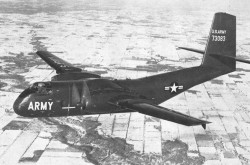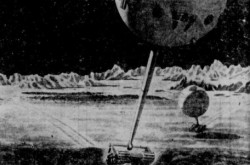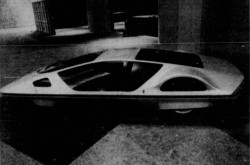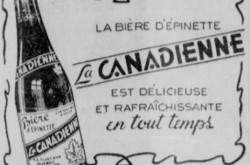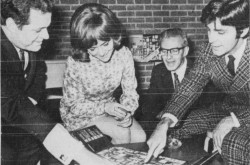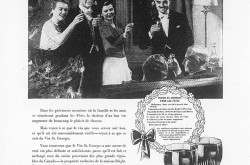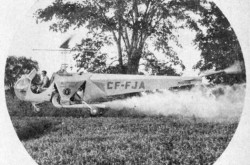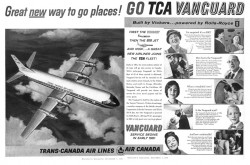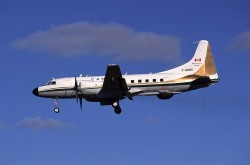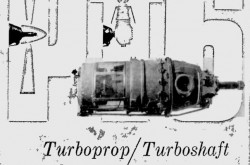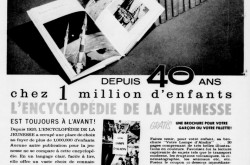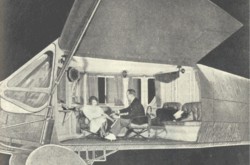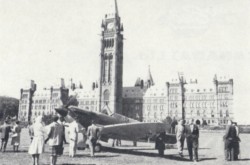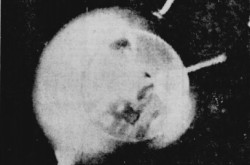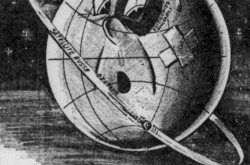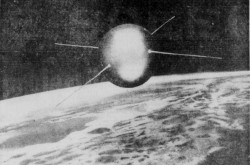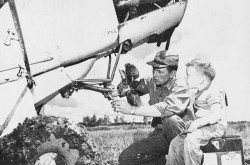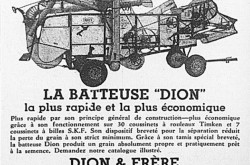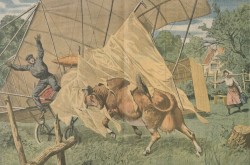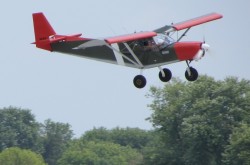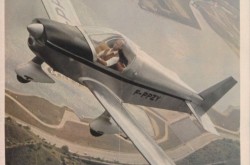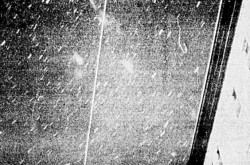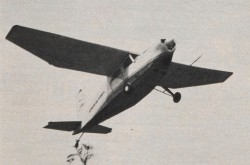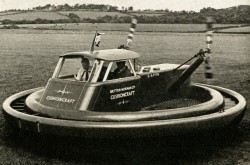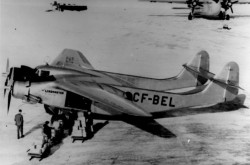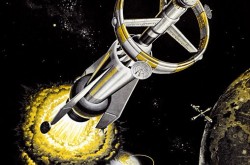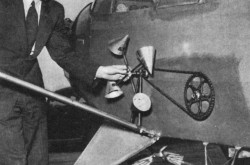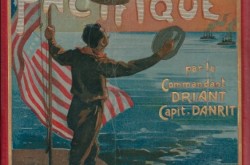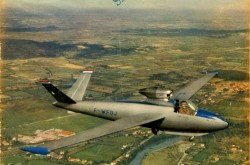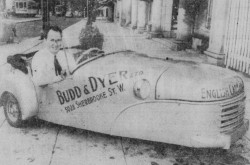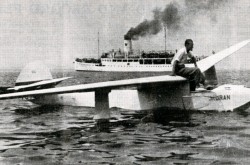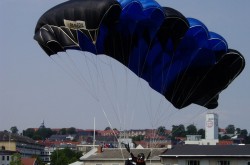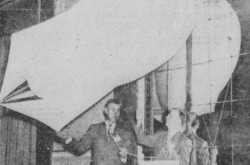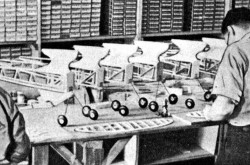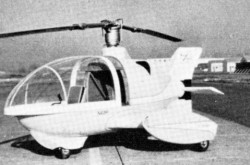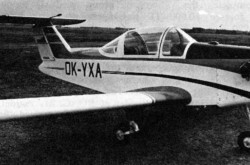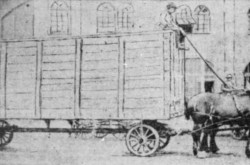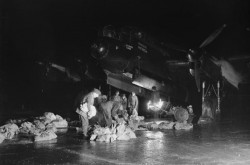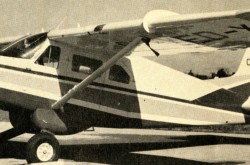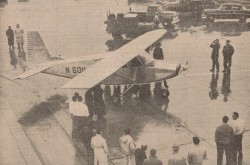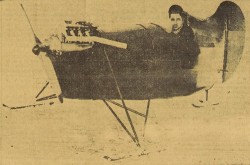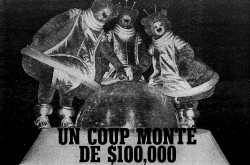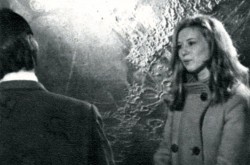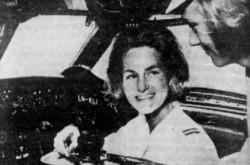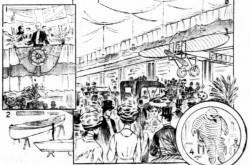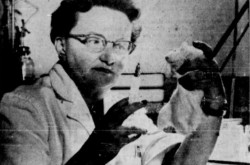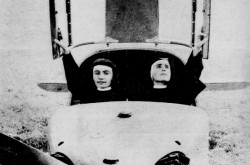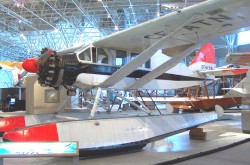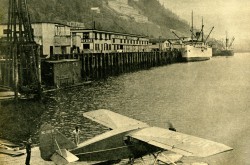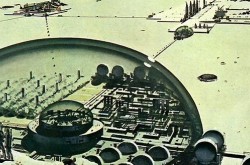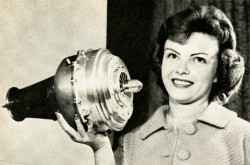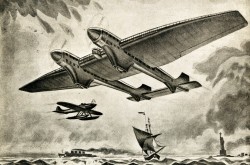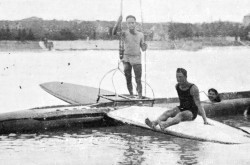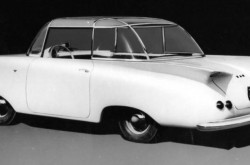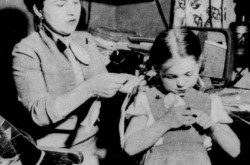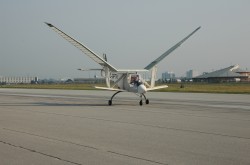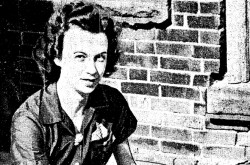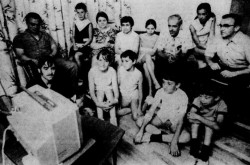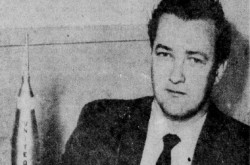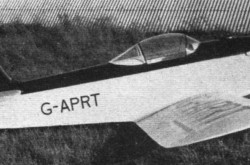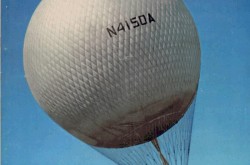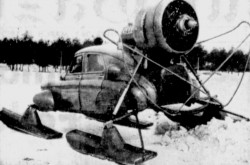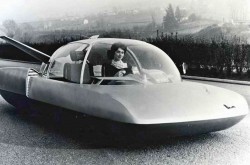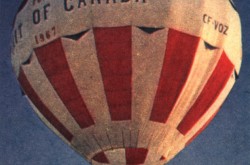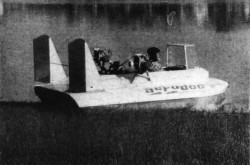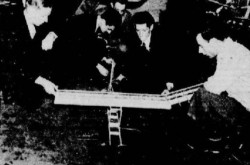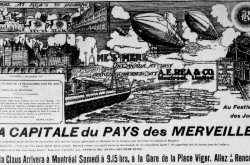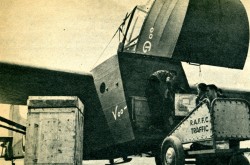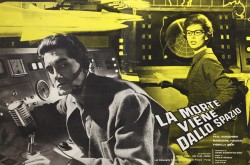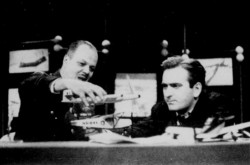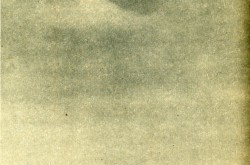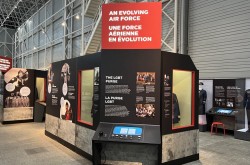Miracle of miracles, look what the plane dragged in: The Sankt-Peterburgskaya aviatsionnaya nedelya

Good day to you, my reading friend, and… What is it? You have no idea of what the expression Sankt-Peterburgskaya aviatsionnaya nedelya means, do you? Sigh. It meant, means and will always mean St. Petersburg aviation week.
Let us start again. Good day to you, my reading friend, and welcome to the wonderful world of aviation and space, and the thoroughly non-wonderful Russian Empire, the peoples’ prison. The year was / is 1910.
Realising the ever increasing popularity of aviation in Western Europe and North America, a number of wealthy / influential Russians concluded it was high time that St. Petersburg, the capital of the empire and an administrative / commercial / cultural / industrial centre, offered its residents the chance to see pilots and aeroplanes in action. While it looks as if an aviation committee actually organised the air meet, the first one to be held in the Russian Empire, the Vserossiykim Avtomobil’nym Obshchestvom, or all-Russian automobile society, was certainly involved. One only needs to mention the hard work of its vice-president, a well-off businessman who played an important role in the introduction of the automobile in the Russian Empire, Pavel Pavlovich Beckel.
The chosen site was a racetrack, at Kolomiaggi, 50 or so kilometres (30 or so miles) from downtown St. Petersburg.
You may interested to hear (read?) that the air meet was held under the patronage of the Imperatorskiy Vserrossiiskiy Aeroklub, in other words the imperial all-Russian aero club, and, perhaps, a well-known Parisian daily sport newspaper. Indeed, one of the luminaries of L'Auto, Georges Louis “Géo” Lefèvre, was one of the 3 stewards of the St. Petersburg aviation week.
By the way, Lefèvre was / is the gentleman who originated the idea of the Tour de France, arguably the most prestigious and difficult bicycle race in the world – and one plagued by doping problems pretty much since day one. Sorry.
The St. Petersburg aviation week was to be held between 25 April and 2 May 1910, as far as the denizens on the Russian Empire were concerned. In most of the world, said aviation week was to be held between 8 and 15 May, and…
What was this very loud noise I heard? Your hamster falling off its wheel?! Are you keeping a Josephoartigasia or something? And… Sigh. Josephoartigasia was a 900 kilogrammes (2 000 pounds) rodent from South America which went extinct a couple of million years ago. You should read more history of the naturel variety, my reading friend.
The difference in dates mentioned a few moments ago was / is due to the fact that the Russian Empire and a few other places were still using the Julian calendar in 1910, whereas most of the world was using the Gregorian calendar. And here lies a tale.
In 45 before the current era, a Roman statesman / historian / general / author named Gaius Iulius Caesar imposed a new calendar on friends, Romans and countrypersons. Yes, Iulius. There was no J in the old Roman alphabet. Either one is truly pedantic or one is not.
Said Julian calendar consisted of a 12 months year of 365 days with an extra day put in every 4th year. This unilateral, one might almost say curatorial decision, sorry, brought to a close a rather chaotic period in the history of the Roman republic.
You see, my reading friend, the calendar in use until then consisted of 12 months and 355 days. A 13th month, Mercedonius, could be inserted between Februarius and Martius. As far as yours truly can figure it out, 5 of its 27 days were extracted from Februarius which meant that the intercalary year had 377 days, unless, of course, it had 378. The number of days depended on when the 22 additional days (27 - 5 = 22. Duh.) of Mercedonius were inserted, i.e. after the 22nd or 23rd day of Februarius. The odd intercalary year could be omitted, however, in order to bring the calendar year closer to what was actually happening out there in space, the final frontier. And... Have I lost you, my reading reader? Feel free to re-read the paragraph. I can wait.
So, was everything going well in the republic? Well, not really. You see, the high priests who set the calendar were often politicians. Some / many (most?) of them were quite willing to drop in or leave out the odd Mercedonius to help their allies or annoy their enemies, all of these people having terms of office that were based on the calendar year. So what, you might say? What damage can adding 1 month or 2 do? What damage, you ask? Dear Flying Spaghetti Monster! With pesto sauce. Sorry.
Would you believe that the year 46 before the current era, also known as the last year of confusion, had 15 months and something like 445 days? Why, you should. This was the price the Roman republic had to pay to clean up the mess and realign its calendar with the seasons. What damage can adding a month or 2 do? Good grief...
Mind you, it took some years for the Julian calendar to come into its own but everyone came to admit that good old Julius, sorry, Iulius, had done good. As we all know, the Roman authorities renamed his birthmonth, i.e. Quintilis, as Iulius in 44 before the current era, not too long before he was assassinated.
The catch, of course, was that adding a day every 4th year did not entirely solve the problem caused by the fact that the Earth does not go around the Sun in precisely 365.25 days. By the 16th century, the Julian calendar was 10 days out of whack. The link between the timing of Easter and the spring equinox, around 21 March, meant that this holy day was falling earlier and earlier in the year. Looking for Easter eggs in snow up to your armpits was no fun. Even the wolves complained. Sorry.
Eager to solve the problem, pope Gregorius XIII imposed a new calendar. With a stroke of a papal quill, 4 October 1582 was followed by 15 October 1582. Not everyone was thrilled. There was much outrage, for example, when some people collecting rents, debts, etc. showed at the doors of other people at the end of the month, asking for full payments. Isn’t capitalism wonderful? Why do you think the robber barons got that moniker?
Countries where protestant and orthodox churches were at the top of the food chain initially refused to adopt the Gregorian calendar, which caused a few problems. The expression time zone, for example, took a whole new meaning.
The United Kingdom only switched gears in September 1752, which meant that 12 days had to be lopped off. The Russian Soviet Republic made the jump in February 1918, and lost 13 days in the process.
Speaking personally, yours truly might have waited a bit longer, until February 2100, so that the change would be a full 2 weeks, and… Why are you looking at me like that and why are you speaking in such a low voice over the phone?
And back to our story. A grand total of 6 pilots part in the St. Petersburg aviation week:
- Josef Henri Charles Christiaens, a Belgian engineer, automobile racing pilot and aeroplane pilot who flew a Henry Farman biplane;
- Élisa Léontine Deroche, a French actress, automobile racing pilot and aeroplane pilot known as baroness Raymonde de Laroche who flew a Voisin biplane;
- Léon Florentin Morane, a French automobile racing pilot and aeroplane pilot who flew a Blériot monoplane;
- Edmond Morelle, a French pharmacist / doctor, automobile racing pilot and aeroplane pilot known as Edmond who flew a Henry Farman biplane;
- Nikolai Evgrafovich Popov, a Russian agronomist and aeroplane pilot who flew a French-made Astra-Wright biplane; and
- Eugen Hubert Walter Wiencziers, an Austro-Hungarian engineer (?), motorcycle racing pilot and aeroplane pilot who flew an Antoinette monoplane.
A mean-spirited individual might quip that there were more prizes on offer during the St. Petersburg aviation week than there were pilots trying to earn them.
Yours truly believes that the aforementioned aviation committee contacted quite a few aviators, most of them foreign given the backward state of aviation in the Russian Empire, but that many of the more famous ones politely turned down the offer, possibly because they would be taking part in at least 1 of the 7 (!) air meets held in 4 countries (France, German Empire, Italy and Spain) between 1 and 22 May 1910. If truth be told, the 6 aviators who took part in the St. Petersburg aviation week were not particularly experienced.
A special train transported the aeroplanes of the non-Russian aviatrix and aviators all the way to St. Petersburg. And yes, every aeroplane present at the St. Petersburg aviation week was French-made and 5 of the 6 were actually French-designed as well.
Before yours truly forget, the Blériot monoplane brought to St. Petersburg was a Type XI, a world famous type of aeroplane mentioned a few times in our you know what since October 2018. Would you believe that the stunning collection of the Canada Aviation and Space Museum in Ottawa, Ontario, includes a Type XI? This aeroplane was built, from plans or components, by California Aero Manufacturing and Supply Company, in 1911, for a certain John W. Hamilton. It was / is one of the first aeroplanes flown in the great state of California.
Would I be correct in assuming that you, my reading friend, know that Deroche / de Laroche was / is the first woman to earn a pilot’s license? Good for you. And when did she obtain this precious document? In March 1910, you say? Very good. Go buy yourself a gold star.
This being said (typed?), Deroche / de Laroche was not the first female Homo sapiens to fly a powered aeroplane all by herself. This honour belonged to another Frenchwoman, Thérèse Peltier, born Marie Thérèse Juliette Cochet. This respected sculptress made her flight into the history books, rarely read ones from the looks of it, in September 1908. She was / is also the first female Homo sapiens to fly in a powered aeroplane. Her pilot on that auspicious occasion was a childhood friend, sculptor and aviation pioneer by the name of Ferdinand Marie Léon Delagrange. The flight took place in Torino, Italia.
Do you have many minutes to go over what happened during the St. Petersburg aviation week? Wunderbar. Putting that twenty in your coffee mug proved very useful.
On the first day of, err, the aviation week, there was both wind and rain. Several grand dukes, there were 17 adult ones to choose from after all, attended the opening ceremonies. Yours truly cannot say, however, if Grand Duke Aleksandr Mikhailovich Romanov, honorary president of the aforementioned Imperatorskiy Vserrossiiskiy Aeroklub and brother in law of tsar Nikolai II, born Nikolai Aleksandrovich Romanov, was present.
Not too long after a priest of the Rússkaya Pravoslávnaya Tsérkov blessed the aeroplanes, Christiaens took to the sky. He, Morelle / Edmond and Morane seemingly flew twice that day.
If the blessing feels odd, my reading friend, please note that Roman catholic priests blessed countless vehicles in Québec in the 19th and 20th centuries. The Roman catholic church, however, was not a government creature, which was pretty much the status of the Rússkaya Pravoslávnaya Tsérkov.
On his second flight, to everyone’s surprise, Morelle / Edmond went on a cross country flight. As the hours passed, the organisers of the aviation week began to worry he might have crashed somewhere. Yours truly does not know if they knew that, after having to make an emergency landing in a field when a control cable snapped in mid-air, the French aviator, who could not have ordered a glass of vodka in Russian had his life depended on it, had nonetheless managed to have a pair of Russians rush to the site of the air meet to fetch his mechanics.
Said mechanics rushed to the scene, examined the aeroplane and suggested to boss man that the aeroplane be partly disassembled and towed to the site of the air meet. Morelle / Edmond refused. He told his crew to repair the aeroplane so that he could fly back to the site of said air meet. The crew probably thought this was a bad idea, but he was the boss. They presumably began their journey back to the site of the air meet soon after Morelle / Edmond took off, narrowly missing several bumps, ditches and potholes.

Nikolai Evgrafovich Popov with one of his Astra-Wright biplanes, St. Petersburg, Russian Empire, Spring 1910. Tsentral’nyy gosudarstvennyy arkhiv kinofonofotodokumentov Sankt-Peterburga.
In the late afternoon, after hours spent trying to make the CENSORED engine of his biplane work, Popov managed to take off – just before or after the end of the official flying period. The brass band on site immediately began to play Bozhe, Tsarya khrani! (God save the tsar!), the national anthem of the Russian Empire, as the crowd, which had remained in their seats to see the local boy fly, cheered like mad people. It has been suggested that the crowd was not too pleased to hear that Popov’s flight would not be added to his tally because most, if not all of it had taken place after the end of the official flying period.
As this uproar was taking place, Morelle / Edmond appeared over the field and landed. The organisers of the aviation week were not amused. Landings away from the site of the air meet and, perhaps, impromptu cross country flights being verboten, they fined Morelle / Edmond and removed his flights of the day from the tally of the competitions.
Before I forget, the head of Popov’s ground crew may, I repeat may, have been a renowned American photographer fascinated by aviation. Back in August 1909, Popov and Chester Marvin Vaniman had taken part in an attempt to reach to reach the North Pole organised by American journalist and explorer Walter E. Wellman. The French-made airship America had to be towed back to its base in the Norwegian archipelago of Svalbard, in the Arctic, only hours after liftoff.
Before I forget, please note that the northern longitude of St. Petersburg meant that the days in May were pretty long and the nights pretty short. The aviators were therefore able to fly in complete safety until 9 PM.
Would you believe that St. Petersburg is as far north as the border which separates the Yukon, Northwest Territories and Nunavut from British Columbia, Alberta, Saskatchewan and Manitoba? I kid you not.
On the second day of the aviation week, there was still a fair amount of wind. Morane took off but decided to come back down almost immediately. Soon after, as he was taxiing, Wiencziers collided with the aeroplane of Morelle / Edmond, (seriously?) damaging both machines. While neither man was injured, this incident kept them firmly on the ground for a few days. Adding insult to injury, Popov’s aeroplane misbehaved as he attempted to take off. The landing gear was damaged, as was at least one wing. Christiaens and Morane were luckier and made brief flights later in the day.
On the third day of the aviation week, fortune smiled on the aviators and the wind found someone else to annoy. As the skies cleared, the spectators finally saw something really worth seeing. All in all, Popov, Morane and Christiaens each remained in the air for more than an hour. The latter flew over Kronstadt, the main base of the Voenno-Morskoi Flot Russiiskoi Imperii or, as you may have guessed, imperial Russian navy, in the Baltic Sea. This excursion probably raised a few eyebrows given that the Belgian aviator probably did not seek permission before taking off. It should be noted that Popov suffered an engine failure in midair which led to an emergency landing. He was lucky to walk away from that controlled crash.
After the end of the day’s activities, Christiaens gave a few people the chance to fly in an aeroplane. One of the lucky individuals was a dancer who may, I repeat may, have been Tamara Platonovna Karsavina, a prima ballerina with the Imperatorskiy Russkiy Balet.
On the fourth day of the aviation week, a nice day, Christiaens, Morane and Popov made several flights. After sometime spent trying to figure out what was wrong with his engine, Popov took off for what turned out to be the longest flight made during the St. Petersburg aviation week. He landed after more than 2 hours of flight, after sunset, when he engine failed.
Even though he congratulated Popov after a particularly long flight, on that day perhaps, the Russian minister of War, General Vladimir Aleksandrovich Sukhomlinov, did not seem to think that aeroplanes were, or would be, all that useful to the Rússkaya Imperátorskaya Ármiya. This cavalry officer did not think that they would / could replace cavalry in its reconnaissance role. Indeed, as far as Sukhomlinov was concerned, aeroplanes were little more than “Blériot toys.”
Dare yours truly state that Sukhomlinov was / is a controversial figure described as autocratic, charming, clever, corrupt, cunning, dishonest and incompetent?
Popov’s mechanical problems annoyed so many people that a subscription campaign was soon started to provide Russian aviators with reliable aeroplanes.
On the fifth day of the aviation week, the wind blew hard and Popov was brought down by a gust. He was not injured but his aeroplane was all but destroyed. Popov’s reputation among the spectators grew; he had more guts than any of the foreign aviators, who chose not to fly. The Russian pilot’s announcement that he had a second Astra-Wright biplane which could be ready to fly within hours caused an uproar among the foreign aviators. They demanded that any and all flights made by Popov before the first flight of his second aeroplane be expunged from the totals of the aviation week. Several people got rather hot under the collar and the foreign aviators stated that they would remain on the ground if their demand was rejected.
Adding insult to injury, perhaps, the race scheduled to take place between the site of the aviation week and the naval base of Kronstadt was canceled by the authorities. Five of the 6 aviators had already registered to take part in it.
On the sixth day of the aviation week, the wind continued to blow hard, which meant that, protest or no protest, no one could fly. As was to be expected, the behaviour of the foreign aviators was strongly denounced in St. Petersburg newspapers. Faced with a pilots’ strike and conflicting opinions, the organisers of the aviation week sent an urgent telegram to an international sport body in Paris, maybe and I mean maybe, the Fédération aéronautique internationale – the world governing body for all manners of aeronautical records mentioned many times in our blog / bulletin / thingee since January 2018.
On the seventh day of the aviation week, the aviators faced several misfortunes. In the first instance, an answer came from Paris stating that Popov’s flights using his first airplane would be admissible if the contract prepared by the organisers of the aviation week mentioned him, and not any specific airplane, and if there were compelling reasons. Although rather crossed, the foreign pilot had to back down and fly. That flying did not go as planned, however.
Pushed toward the bleachers by a gust of wind, immediately after taking off, Popov had to make a quick turn. He crashed and hit a fence. He broke the left wings and a couple of control surfaces (rudders? elevators?) of his second Astra-Wright biplane, for whom this had been a first (and last?) flight. His engine having stopped in midair, after a very nice if rather brief flight, Wiencziers had to make a quick turn in front of the bleachers so that he would not fall on spectators – quite important ones from the looks of it. The landing gear of his monoplane was smashed in the ensuing crash.
Edmond seemingly flew twice, each time with a passenger, Princess Sofia Aleksandrovna Dolgoruka, the wife of a well-connected cavalry officer, Major General Count Nikolai Pavlovich Fersen, and Deroche / de Laroche. He damaged his landing gear during his second flight of the day.
Morane was also brought down by a gust of wind and / or a malfunctioning engine. He crashed, damaging both his machine and that of Christiaens. Worse still, Morane’s monoplane hit several spectators and / or referees who were looking at the Henry Farman biplane of Christiaens. One of them, a well-known government official who wrote (on aviation matters?) for the very popular and servilely pro-government daily newspaper Novoye Vremya, Vasily Silovich Krivenko, was seriously bruised and may have suffered a concussion. Major General Alexandr Matveevich Kovanko, an officer involved in ballooning since the 1880s who had been interested in aviation for some time, was said to have died of his injuries, which proved untrue. One has to wonder if the European aviation magazines who had noted his passing retracted their stories.
Blaming Morane for this sorry mess, the organisers of the aviation meet confiscated his aeroplane as well as his prize money. The French aviator was told to make himself available to the local authorities for as long as necessary. Whether or not Morane was fined is unclear.
Deroche / de Laroche made a flight, her first in St. Petersburg, which lasted only 3 or so minutes. Her Voisin biplane was damaged on landing, a broken elevator or horizontal stabiliser it seemed. The fancy clothing of the “baroness” and her alleged love of champagne, allegedly sipped at the airfield in the company of Russian officers, had not gone unnoticed. This all too brief flight did not add to her reputation within certain St. Petersburg circles. This behaviour, if true, was quite surprising. Deroche / de Laroche was a gifted aviatrix.
When that day ended, the organisers of the air meet could thank their lucky start that no one had been killed, or seriously injured.
On the eighth and final day of the aviation week, it rained cats and dogs. It was also windy. As a result, no one flew but Christiaens and Morelle / Edmond really did try. In any event, all competitions were cancelled and the spectators who, in many cases, had patiently waited for hours, demanded their money back. They got their wish.
In the end, three of the aviators present at the St. Petersburg aviation week did pretty good. Christiaens, Morane and Popov made multiple flights and each of them remained aloft between 3 hours 20 minutes and 5 hours. By comparison, the total air time of Deroche / de Laroche, Morelle / Edmond and Wiencziers was, depending on the sources, 40 or 20 minutes. Indeed, it has been suggested that Deroche / de Laroche was fined because she did not accomplish much in St. Petersburg. Again, this is quite surprising. This writer cannot explain why she flew so little.
All in all, one could argue that Christiaens did best with first places in 3 competitions (distance in closed circuit, duration of flight with a passenger and speed). The Belgian press certainly sang his praise.
While it is true that attendance figures to an event must be taken a grain of salt, or a boulder in some cases, it has been suggested that as many as 160 000 people attended the St. Petersburg aviation week. Many people presumably went to Kolomiaggi more than once, of course. Aristocrats loved the spectacle they had witnessed, as did middle class folks and working class folks. An individual worthy of note among the multitude was a teenaged Vladimir Vladimirovich Mayakovsky, one of the great Russian / Soviet poets and playwrights of the 1910s and 1920s. Among the throngs were also most of the individuals who were attending the second congress of Russian writers, held in St. Petersburg around that time.
And yes, the St. Petersburg aviation week did not run a deficit. Yay! Sorry.
As the St. Petersburg aviation week ran its course, the residents of the city could visit another venue where the first Russian-made aeroplane, a copy of a French-designed (Henry?) Farman biplane known as the Rossiya-A, was on display.
Although scheduled to end on 2 May (15 May outside the Russian Empire), the St. Petersburg aviation week kept its doors open for an additional day. A little bird told me that the general public was not invited for that special day. You see, tsar Nikolai II popped in that day with his entourage. Sadly enough, yours truly does not know if the decision to visit the site of the aviation week came from the tsar himself or as a suggestion from a member of said entourage.
In any event, Nikolai II looked at the aeroplanes in their hangars. This was the first time he had seen an aeroplane from up close. The aviators were presented to the tsar, which led to question being asked about the various aeroplanes. Nikolai II later saw Christiaens, Morane (?) and Deroche / de Laroche (?) go up in their machines. He thanked both the pilots and the organisers of the air meet.
It is well worth noting that Nikolai II made the visit with a German relative, Grand Admiral Prince Albert Wilhelm Heinrich of the house Hohenzollern, the younger and far less unstable / insecure / erratic / egotistical brother of Kaiser Wilhelm II, and his wife, Princess Irene Luise Marie von Hessen und bei Rhein. Already deeply interested in aviation, the Prince got his pilot’s licence in November 1910. Then aged 48, he may well have been the oldest registered pilot in the world.
This imperial visit did not go unnoticed. An unnamed person at La Revue aérienne, the bimonthly magazine of the Ligue nationale aérienne, wrote a rather interesting piece, presented here in translation, for the occasion.
Among the miracles of aviation, this is not one of the least. For those who know the invisibility of Tsar Nikolai II (he remained ten years without appearing in the streets of Saint Petersburg, whose palace of Tsarkoye Selo is only [32 kilometers / 20 miles] 30 versts away), it is an unprecedented miracle this visit made by the emperor to the airfield. The curiosity aroused by flying machines is stronger than the impenetrable barriers with which the tsar himself is surrounded. There is nothing impossible to aviation.
If yours truly may quote Sheldon Lee Cooper, one the main characters of The Big Bang Theory television series, sarcasm?
You will of course remember that France and the Russian Empire were allies at the time. With allies like these…
You will also remember that Cooper was mentioned in November 2019 and May 2020 issues of our blog / bulletin / thingee. The Big Bang Theory, on the other hand, was mentioned in several issues of that same publication since June 2019.
And yes, the photograph which accompanied the article in La Revue aérienne was at the beginning of this article. The monoplane in the centre of the photograph was / is presumably the Blériot Type XI piloted by Morane. The biplane on the right, on the other hand, was / is presumably one of the Henry Farmans piloted by Morelle / Edmond or Christiaens.
It should be noted that Christiaens and Morelle / Edmond may have sold the aeroplanes they had taken to St. Petersburg to the Voyennoye ministerstvo, the Russian war ministry, before returning home. The latter may have remained in the Russian Empire for 2 or so months to provide flight training to some officers who would be piloting the aeroplanes. Morane’s confiscated monoplane, in turn, was seemingly acquired by Aleksandr Alekseyevich Vasiliev, a young aspiring judge who had just caught a bad case of flight fever.
Moving right along the tsarist path, I hear (read?) that all the aviators were (personally?) awarded the knight’s cross of the Orden Svyatoy Anny, in other words the order of St Anne, by Nikolai II. They also received valuable gifts decorated with diamonds and bearing the Russian coat of arms: a gold bracelet (Laroche / de Laroche), a gold watch and chain (Christiaens, Popov and Wiencziers) or a gold cigarette case (Morelle / Edmond and Morane). The mechanics, in turn, seemingly received a silver medal.
Speaking (writing?) of the tsar, would you believe that this word, just like the German word kaiser, is derived from the word Caesar, as in Gaius Iulius Caesar? Small world, isn’t it?
It goes without saying that Nikolai II, who was almost 42 years old in May 1910, never went up in a balloon, airship or aeroplane. Reigning monarchs did not do that sort of thing. Their minions, sorry, their entourage would probably have fainted at the very thought of such a flight taking place.
Some such minions had a close call in February 1909, however, as Alfonso XIII, in other words Alfonso León Fernando María Santiago Isidro Pascual Antón de Borbón y Habsburgo-Lorena, placed his royal rear end beside Wilbur Wright, at Pau, France, as the latter showed him the controls of a Wright Flyer. The 22 year old Spanish king was sorely tempted to go up with this famous American aviation pioneer.
Wright, as you undoubtedly know, was mentioned many times in our blog / bulletin / thingee since December 2017. Alfonso XIII, on the other hand, was mentioned in a single issue of this publication, in December 2017.
While it is unclear whether or not anyone actually fainted, in July 1910, the 49 year old tsar of Bulgaria, Ferdinand I, born Ferdinand Maximilian Karl Leopold Maria von Sachsen-Coburg und Gotha, in other words a distant relative of the British royal family, went up, at Kiewit, Belgium, with a Belgian pilot, Chevalier (Sir?) Jules de Lamine, thus becoming the first reigning monarch to fly in a powered aeroplane.
A remarkable thing about this day is that fact that, prior to his own flight, Ferdinand I allowed his two sons,
- 16 year old Boris Klemens Robert Maria Pius Ludwig Xaver von Sachsen-Coburg und Gotha-Koháry, and
- 14 year old Kyril Heinrich Franz Ludwig Anton Karl Philipp von Sachsen-Coburg und Gotha-Koháry,
to go up separately with de Lamine. He was, understandably enough, much relieved that both flights went swimmingly. The two teenagers floated on air for the next few hours. Dad could do no wrong that day.
And that’s actually as good a moment as any to end this peroration.
Sbogom, my reading friend, goodbye.


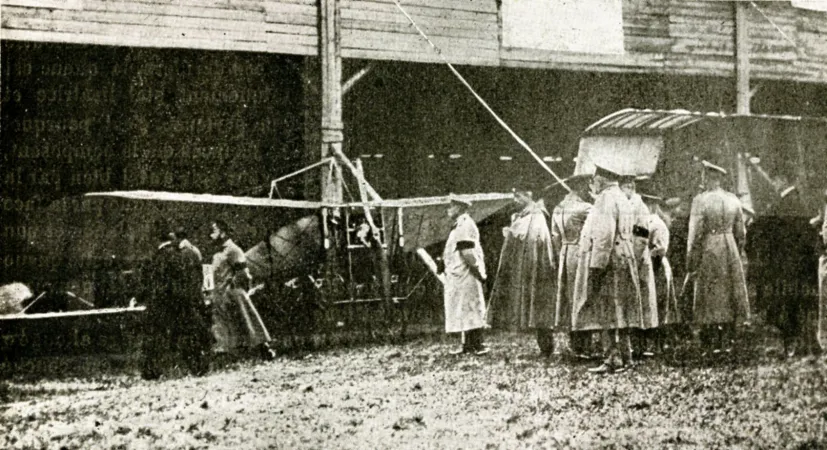












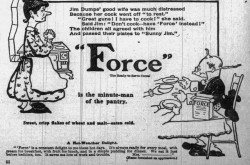
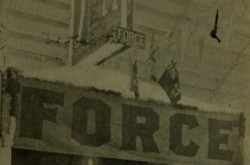
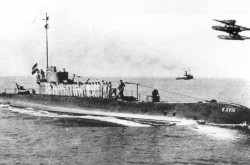
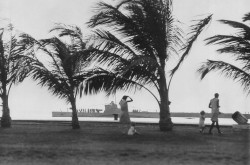
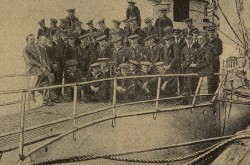
![A block of photographs showing some of the people involved in the bombing of beluga whales in the estuary and gulf of the St. Lawrence River. Anon., “La chasse aux marsouins [sic]. » Le Devoir, 15 August 1929, 6.](/sites/default/files/styles/thumbnail_7/public/2024-09/Le%20Devoir%2015%20aout%201929%20page%206.jpg?h=584f1d27&itok=TppdLItg)
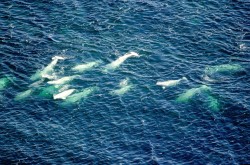
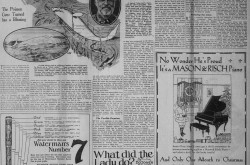

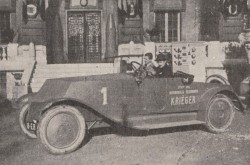
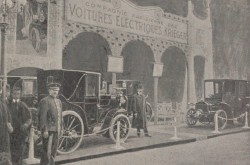
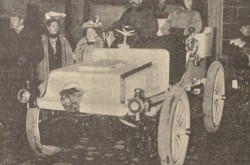
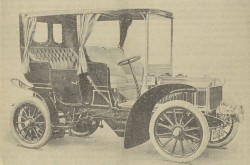

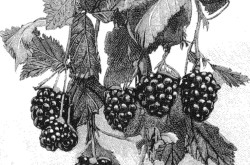
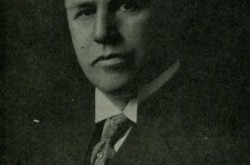
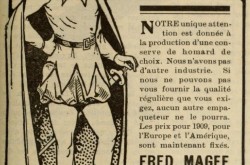
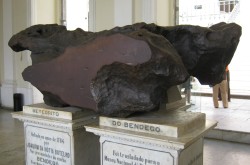
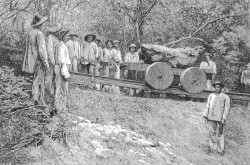
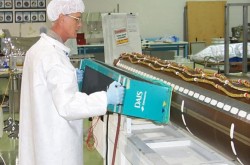

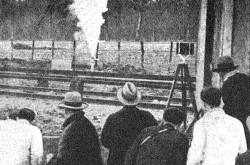
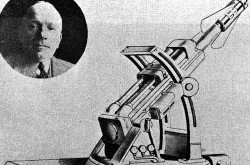
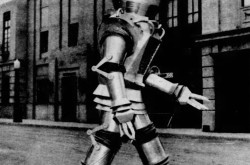

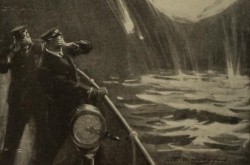
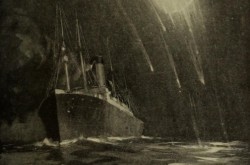
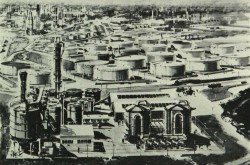

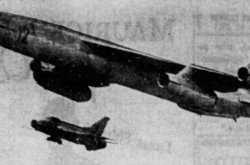
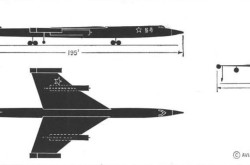
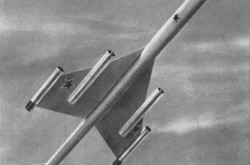
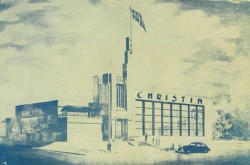
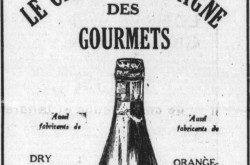
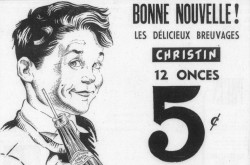
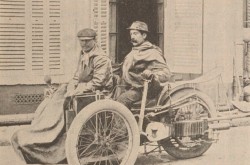
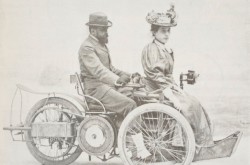
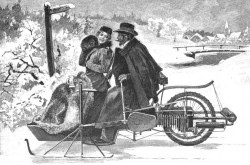
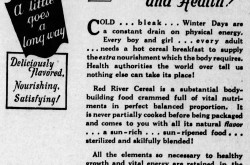

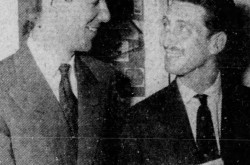
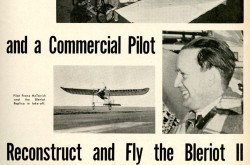
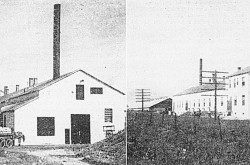
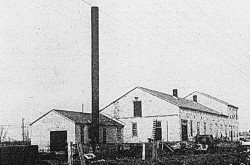



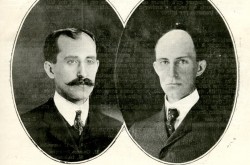

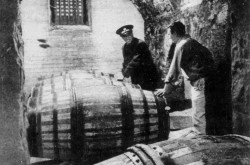
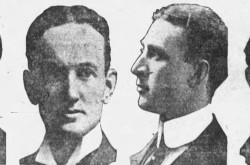
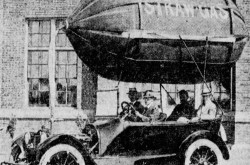
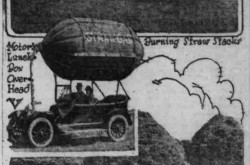
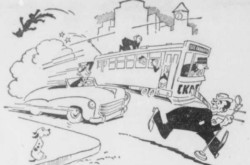

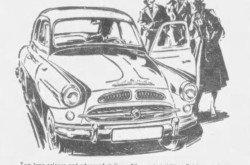
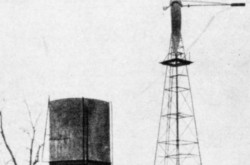
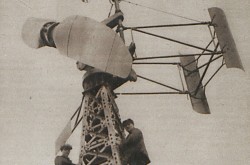
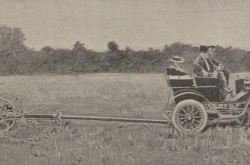

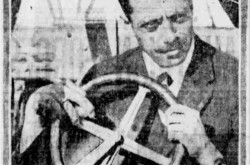
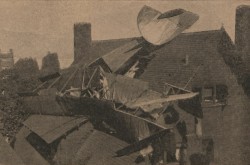
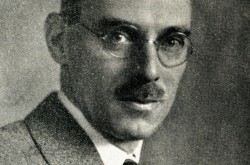
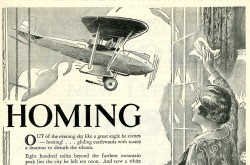
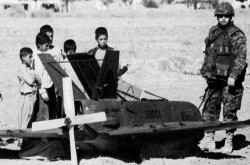
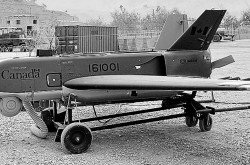
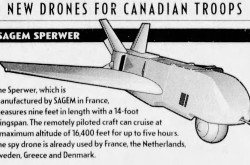
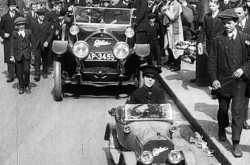
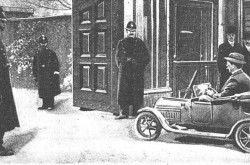
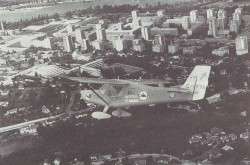
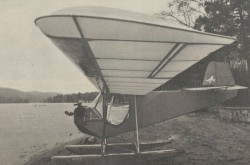

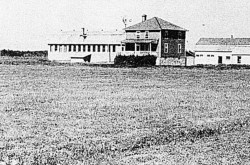
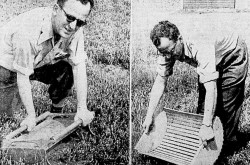
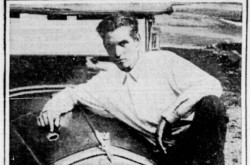
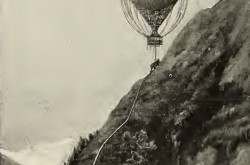
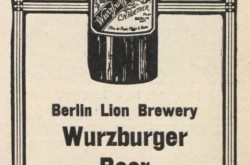

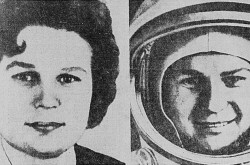
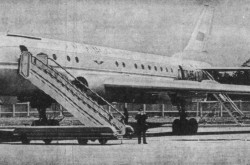
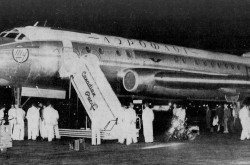
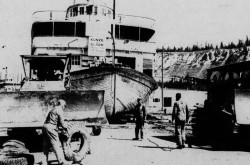
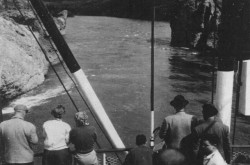
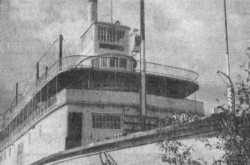
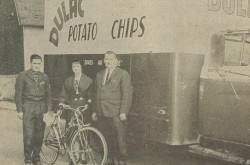
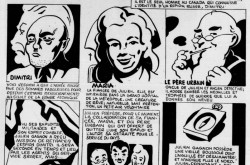
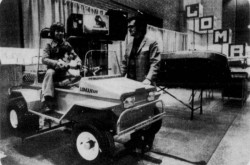
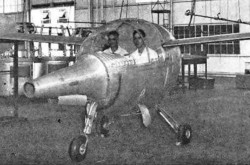
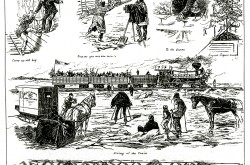
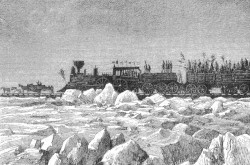
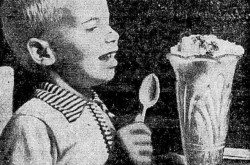
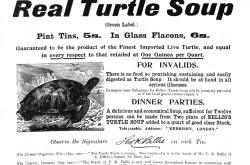
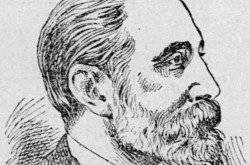
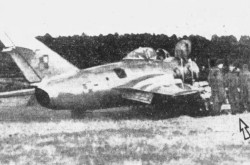
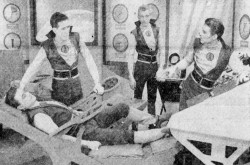
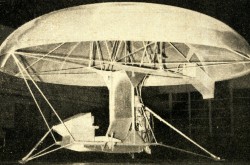
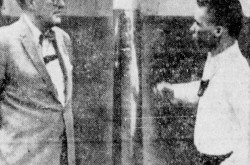
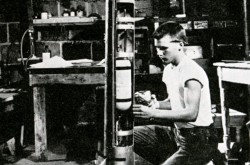
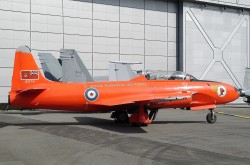
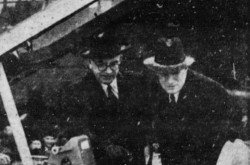
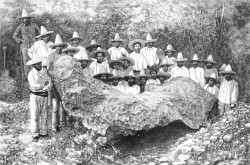
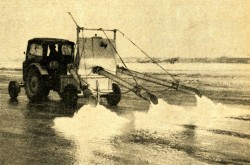
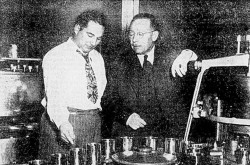
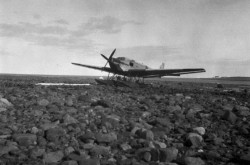
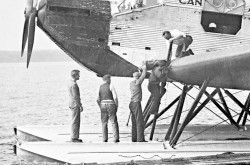
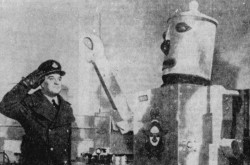
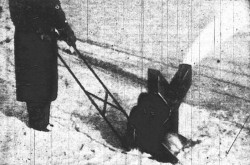
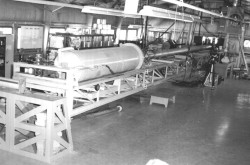
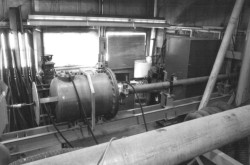
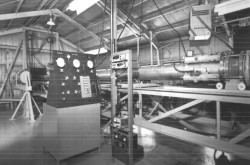
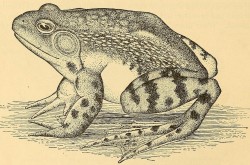
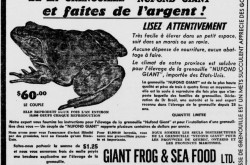
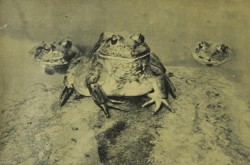
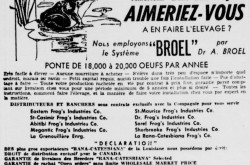
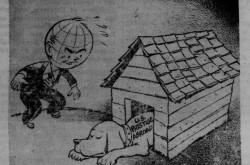
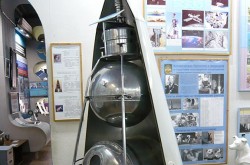
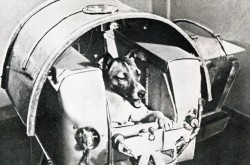
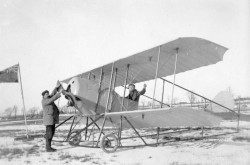
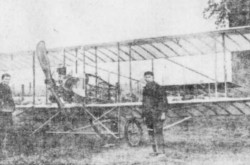
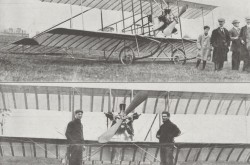
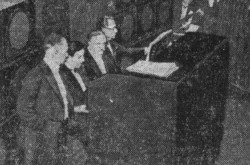
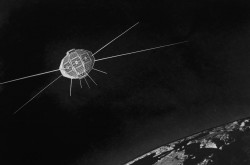
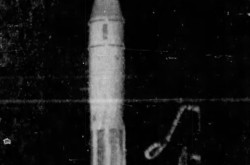
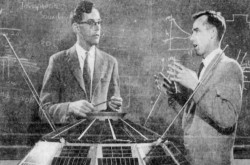
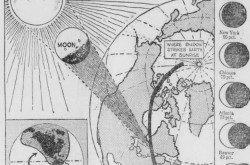



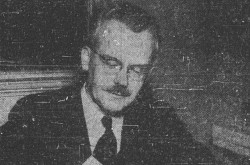
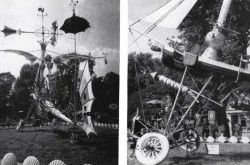
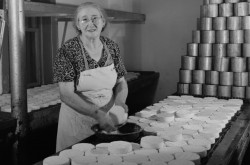
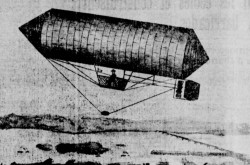
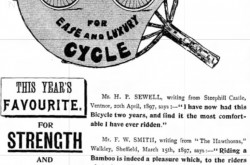
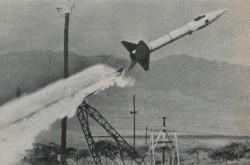
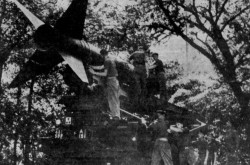
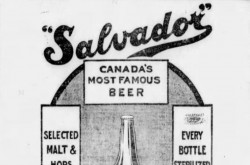

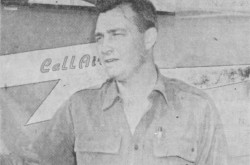
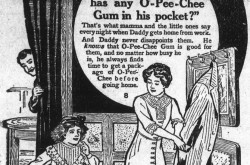
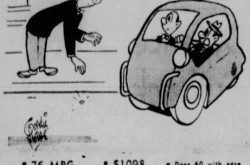
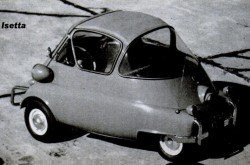
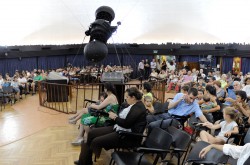
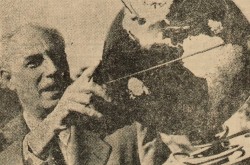
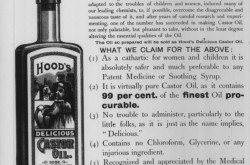
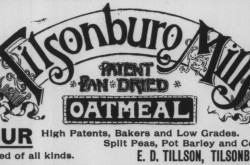
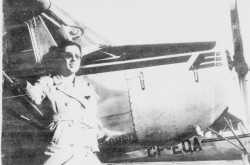
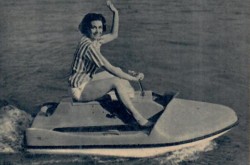

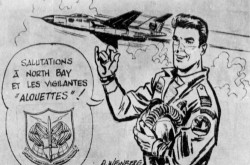
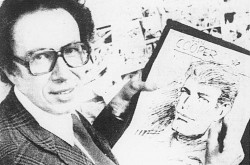
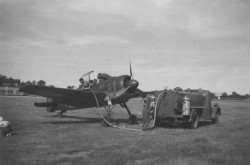

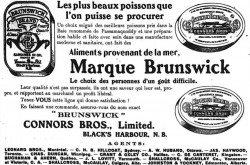


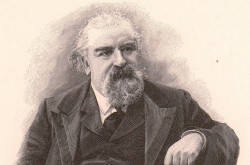
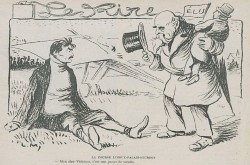
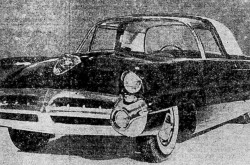
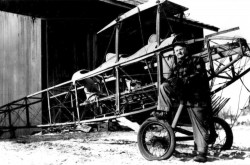

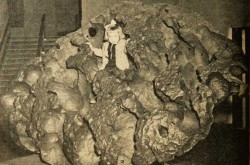
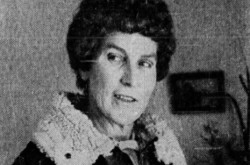
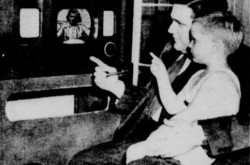
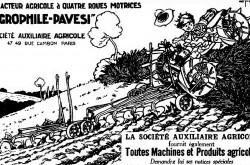
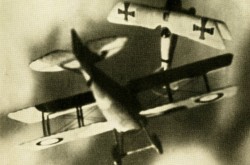
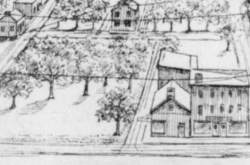
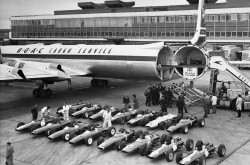
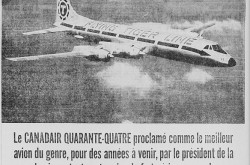
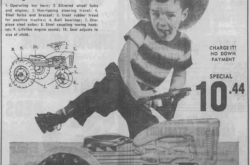
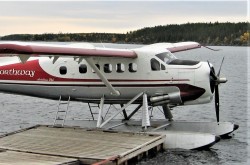
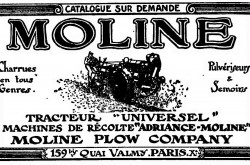
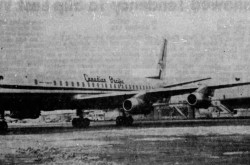
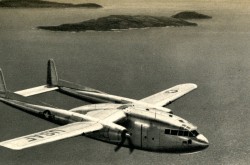
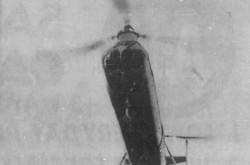

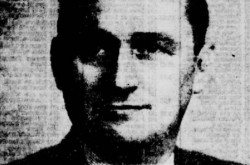
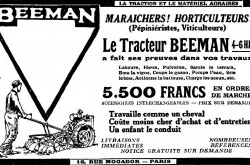
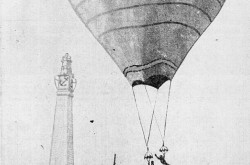

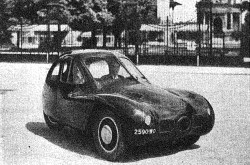
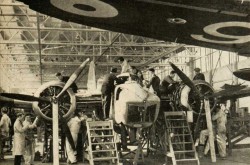
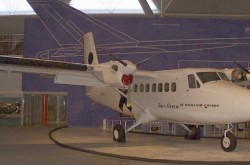
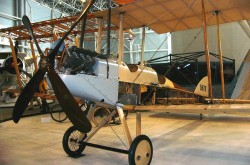
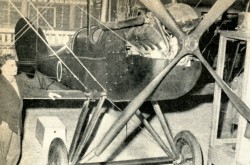

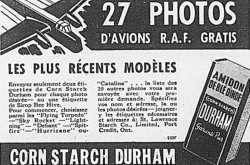

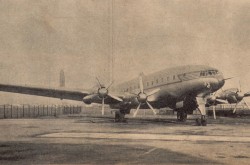
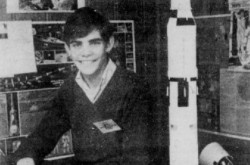
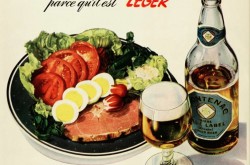
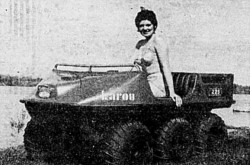
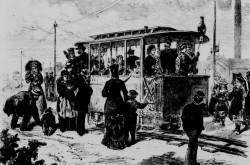
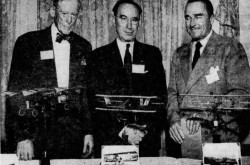

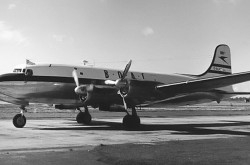
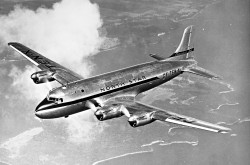
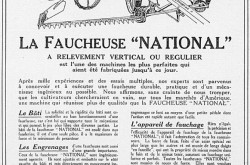
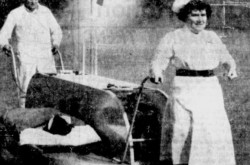
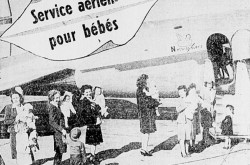
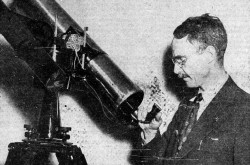
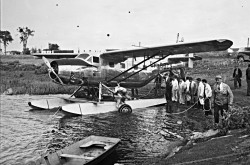
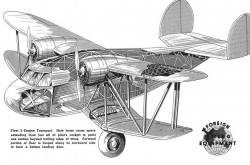
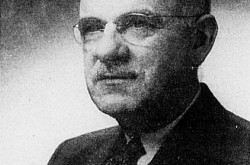
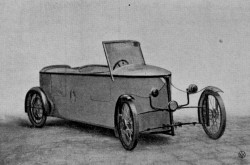
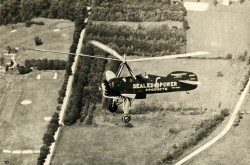
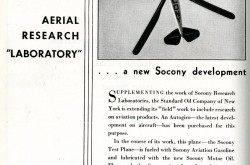
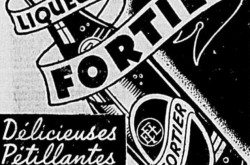
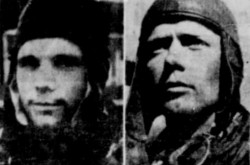
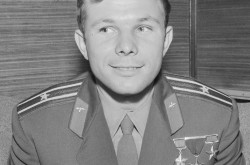
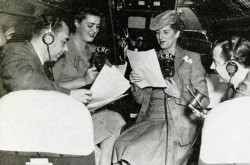
![Peter Müller at the controls [sic] of the Pedroplan, Berlin, Germany, March 1931. Anon., “Cologne contre Marseille – Le mystère du ‘Pédroplan.’ [sic]” Les Ailes, 2 April 1931, 14.](/sites/default/files/styles/thumbnail_7/public/2021-04/Les%20Ailes%202%20avril%201931%20version%20big.jpg?h=eafd0ed4&itok=WnBZ5gMf)
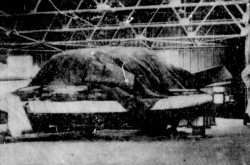
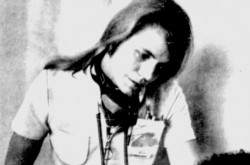
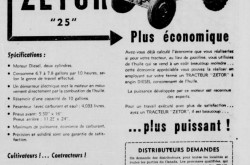
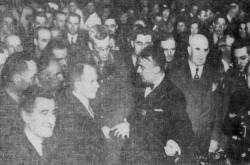
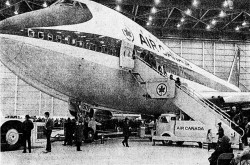
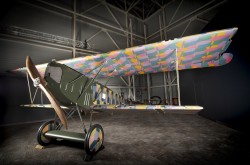
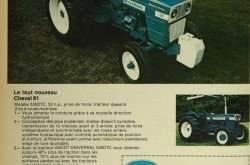
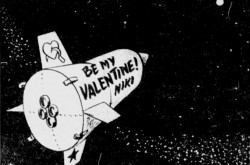
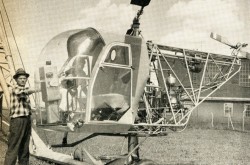

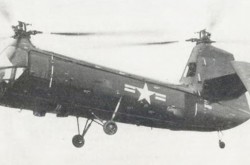
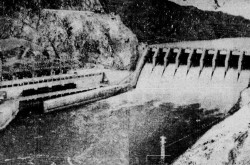
![One of the first de Havilland Canada Chipmunk imported to the United Kingdom. Anon., “De Havilland [Canada] DHC-1 ‘Chipmunk.’” Aviation Magazine, 1 January 1951, cover.](/sites/default/files/styles/thumbnail_7/public/2021-01/Aviation%20magazine%201er%20janvier%201951%20version%202.jpg?h=2f876e0f&itok=DM4JHe5C)
